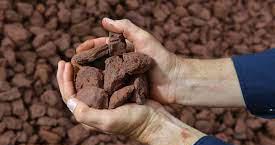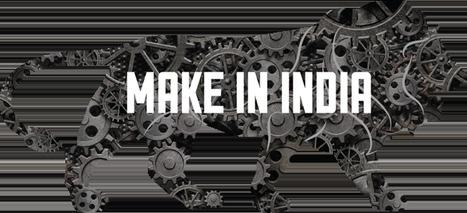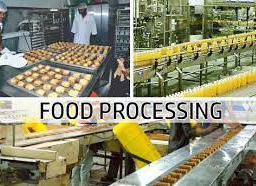
8 minute read
MAKE IN INDIA
Investment climate in India has improved considerably since the opening up of the economy in 1991.
This is largely attributed to ease in FDI norms across sectors of the economy. India, today is a part of the top 100 clubs on Ease of Doing Business (EoDB). FDI inflows in India stood at $45.15 bn in 2014-15 and have consistently increased since then. Moreover, total FDI inflow grew by 65.3%, i.e. from $266.21 bn in 2007-14 to $440.01bn in 2014-21 and FDI equity inflow also increased by 68.6% from $185.03 bn during 2007-14 to to $312.05 bn (2014-21). India has attracted a total FDI inflow of $27.37 bn during the first four months of F.Y. 2021-22 which is 62% higher as compared to the corresponding period of F.Y. 2020-21 ($ 16.92 billion). FDI inflows in India from April to December were $67.54 bn. It is the highest ever for the first ninth months of a financial year and 22% higher as compared to the first ninth months of 2019-20 ($55.14 bn). Total FDI inflows in the country in the last 21 years (April 2000 - March 2021) are $763.5 bn while the total FDI inflows received in the last 5 years (April 2014- September 2019) was $319 bn which amounts to nearly 50% of total FDI inflow in last 20 years. During FY 2020-21, total FDI inflow of $58.37 bn, 22% higher as compared to the first 8 months of 2019-20. FDI equity inflows received during April - November 2020 is $43.85 bn which is 37% more compared to April - November 2020 ($32.11 bn). FDI equity inflow grows by 168% in the first three months of FY 2021-22 ($17.57 bn) compared to the same corresponding period last year ($6.56 bn). Automatic Route Under the Automatic Route, the non-resident investor or the Indian company does not require any approval from the Government of India for the investment. Government Route Under the Government Route, prior to investment, approval from the Government of India is required. Proposals for foreign direct investment under Government route, are considered by the respective Administrative Ministry/ Department.
Advertisement


Food processing - 'A sunrise sector'

India's food ecosystem offers huge opportunities for investments with stimulating growth in the food retail sector, favorable economic policies, and attractive fiscal incentives.
Through the Ministry of Food Processing Industries (MoFPI), the Government of India is taking all necessary steps to boost investments in the food processing industry in India.
The government has sanctioned 41 food parks funded under the Mega Food Parks Scheme of which 38 have final approval. In 2014, there were only 2 Mega Food Parks in the country. As of 1 August 2021 there are 22 Mega Food Parks functioning in the country. Now the target is to take their number to more than 40.
India records close to 15% rise in export of agricultural and processed food products in April-October.
By 2025, India’s food processing industry is expected to be worth over half a trillion dollars.
By 2030, Indian annual household consumption to treble, making India 5th largest consumer 100% FDI is permitted under the automatic route in food processing industries in India. Industry Scenario.
India’s food processing sector is one of the largest in the world and its output is expected to reach $535 bn by 2025-26.
The Food Processing sector in India has a quintessential role in linking Idian farmers to consumers in the domestic and international markets. The Ministry of Food Processing Industries (MoFPI) is making all efforts to encourage investments across the value chain. The food processing industry engages approximately 1.93 mn people in around 39,748 registered units with fixed capital of $32.75 bn and aggregate output of around $158.69 bn. Major sectors constituting the food processing industry in India are grains, sugar, edible oils, beverages, and dairy products.
Under PMKSY, 41 Mega Food Parks, 353 Cold Chain projects, 63 Agro-Processing Clusters, 292 Food Processing Units, 63 Creation of Backward & Forward Linkages Projects & 6 Operation Green projects across the country have been approved.
The key sub-segments of the Food Processing industry in India are Fruits & Vegetables, Poultry & Meat processing, Fisheries, Food retail, dairy industry, etc.
Key facts:
296.65 mn tonnes of horticulture food grains in 2019-20
Milk production of 198.4 mn tonnes during 2019-20
Ranks 3rd in the world in Egg production with 114.38 billion in 2019-20
Second largest producer of fish in the world — total fish production in 2019-20 was 14.16 MT with 7.56% of Global production
70 Lakh Metric Tonne (LMT) of Sugar has been exported in sugar season 2020-21, an increase of 17.45% compared to 2019-20
Food grocery and food services segments, growing at a CAGR of 25% and 15%, respectively, are majorly dominating the Food Retail Sector of India.
India shipped 12,89,651 MT of seafood worth $6.68 bn during 2019-20 The export of other cereals increased from $44.9 mn in AprilJune 2020 to $231.4 mn in AprilJune 2021.
The export of meat, dairy and poultry products increased from $483.5 mn in April-June 2020 to $1022.5 mn in April-June 2021 100% FDI is allowed through the government approval route for trading, including through e-commerce in respect of food products manufactured or produced in India.
Mining the future

Steel
India is the 2nd largest crude steel producer in the world, generating an output of 99.6 MT in 2020.
Domestic consumption of Total Finished Steel (alloy + non-alloy) was at 88.53 MT in 2020 as against 83.64 MT in 2016.
Over 2030-31, crude steel demand/production forecasted to reach 255 MT
Per capita finished steel consumption is expected to rise to 160 kg by 2030-31 (from 74.7 kg in 2019-20)
Steel production (weight: 17.92 per cent)increased by 9.3 per cent in July, 2021 over July, 2020.
Coal
India is home to 1,303 mines which reported mineral production (excluding atomic, fuel, and minor minerals) in 201920 and produced 95 minerals – 4 fuel-related, 10 metallic, 23 nonmetallic, 3 atomic, and 55 minor minerals.
India is the 2nd largest producer of coal. In 2020-21, all India coal production was 716.084 MT.
Consumption / actual supply of coal (including imports) increased from 836.93 MT in 2016-17 to 968.03 MT in 2018-19.
Coal is projected to remain the largest single source of electricity in India in 2040.
Coal production (weight: 10.33 per cent) increased by 18.7 percent in July,2021 over July,2020.
Captive Mine Coal Production Recorded 39. 68 % Growth
Coal Production Increased by 10.35% During November to 67. 84 Mn Ton
The country’s FDI Policy for the metals and mining sector allows:
100% FDI through automatic route in the steel sector 100% FDI through automatic route in the mining sector
Industry Scenario
With the launch of the National Mineral Policy 2019 and the Mines and Minerals (Development and Regulation) Amendment Act 2021, India presents a major opportunity for investors looking to invest in the metal industry in India.
India has large reserves of Iron ore, Bauxite, Chromium, Manganese ore, Baryte, Rare earth and Mineral salts.
The Metals and Mining sector in India is expected to witness a major reform in the next few years, owing to reforms such as Make in India Campaign, Smart Cities, Rural Electrification, and a focus on building renewable energy projects under the National Electricity Policy as well as the rise in infrastructure development.
*The production level of important minerals in March 2021 were: Coal 960 lakh tonnes, Lignite 52 lakh tonnes, Bauxite 2,103 thousand tonnes, Chromite 601 thousand tonnes, Copper conc 11 thousand tonnes, Iron ore 227 lakh tonnes, Lead conc 41 thousand tonnes, Manganese ore 331 thousand tonnes, Zinc conc 164 thousand tonnes, Limestone 391 lakh tonnes, Phosphorite 124 thousand tonnes, Magnesite 12 thousand tonnes, Gold 148 kg, and Diamond 34 carat.
*The production of important minerals showing positive growth during March 2021 over March 2020 included Manganese Ore (80.1%), Lead conc. (74.9%), Phosphorite (57.0%), Copper conc. (50.2%), Chromite (45.8%), Limestone (45.6%), Magnesite (44.9%), Zinc conc. (43.2%), Bauxite (33.4%), Lignite (25.3%), Iron ore (13.7%), and Coal (0.2%) 1
9 coals blocks were auctioned in 2020 for commercial mining. The total expected revenue from these mines is around INR 7,000 cr with a combined peak capacity of 51 MPTA.
The second tranche of auction for commercial coal mining offered 67 mines for sale of coal in March 2021.










